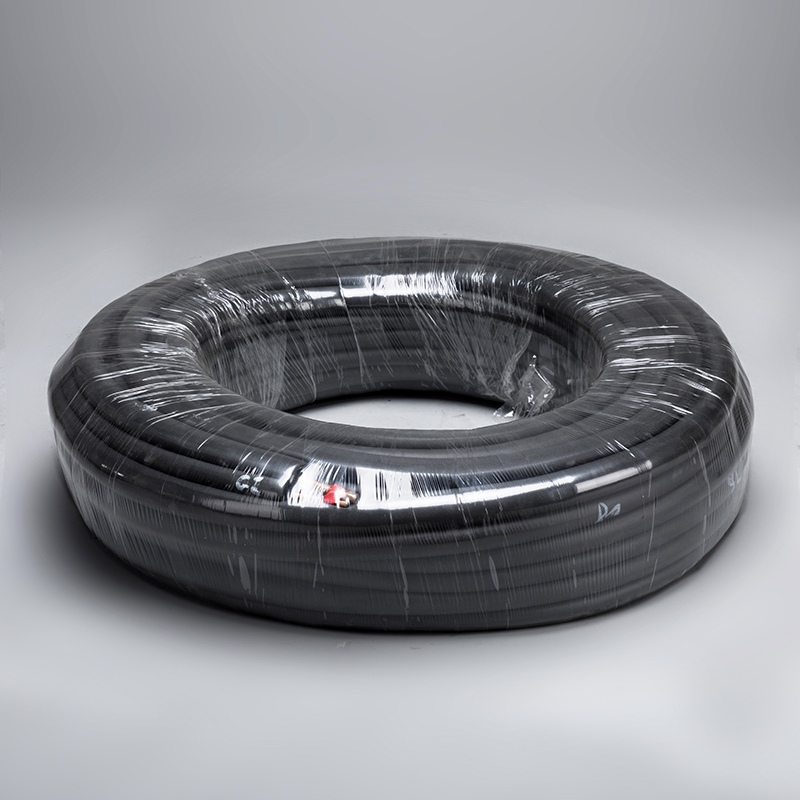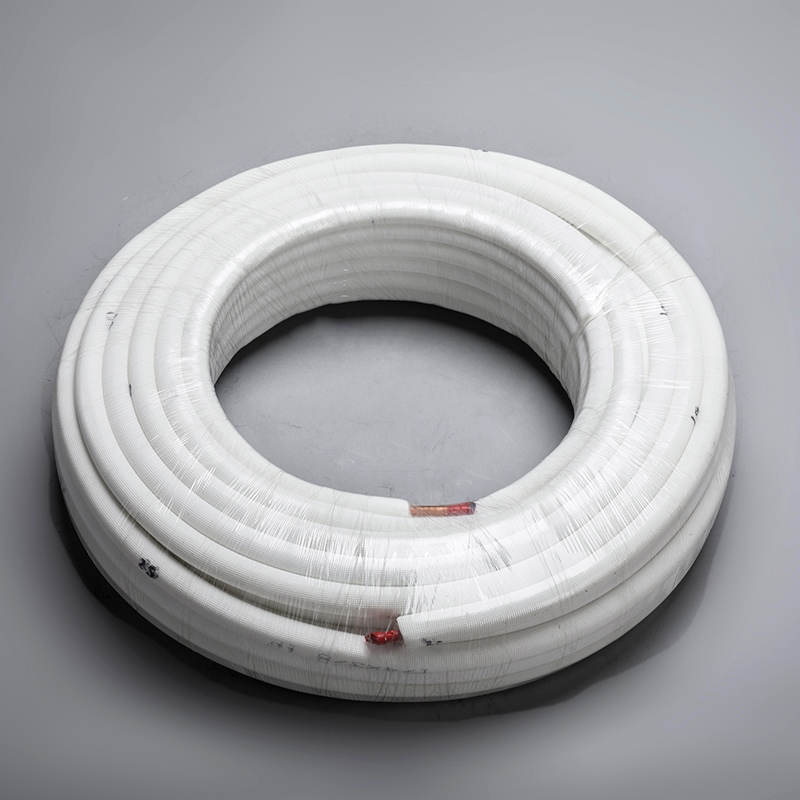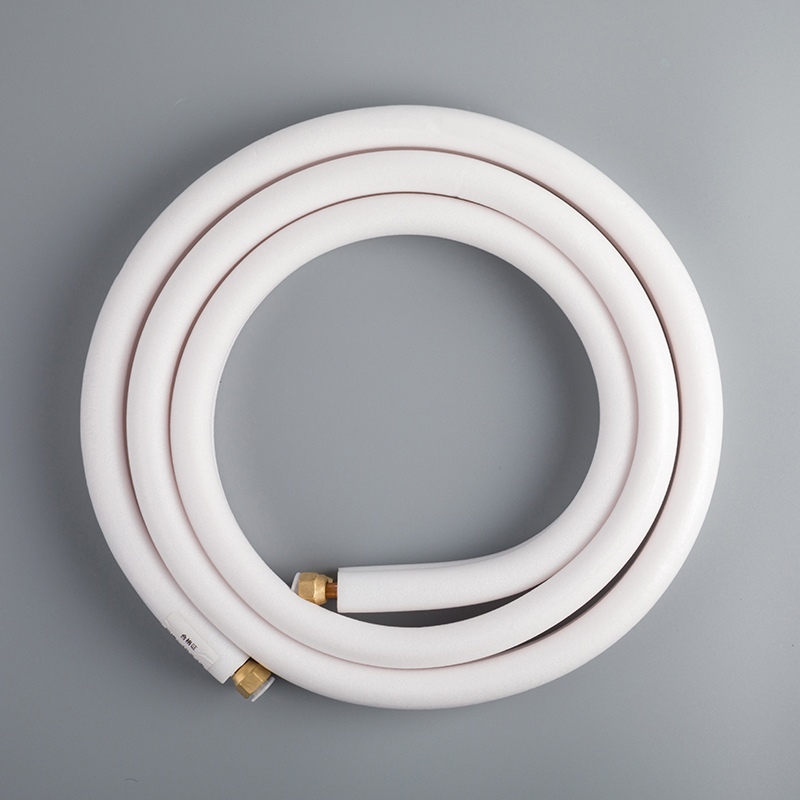How to Properly Braze Copper Pipes for Air Conditioning

Proper brazing of copper pipe air conditioner systems is crucial for ensuring efficient cooling and heating. By understanding the brazing process, individuals can create strong bonds that contribute to the system's reliability and longevity. The use of copper pipe aircond offers superior heat transfer, durability, and corrosion resistance, making them ideal for HVAC systems. Before diving into the detailed steps, it's essential to grasp the significance of this technique and gather the necessary tools and materials, including 50 ft insulated copper pipe air conditioning.
Understanding Brazing
Brazing is a technique that has stood the test of time, originating from ancient civilizations like the Egyptians. Over the centuries, this method has evolved alongside advancements in metallurgy and the crafting of furnaces. It plays a vital role in modern applications like copper pipe air conditioner systems, ensuring durable connections that withstand the rigors of HVAC operations.
What is Brazing?
Definition and basic principles
In its essence, brazing involves joining metal components using a filler material with a melting point lower than that of the base metals. This process creates a strong bond without melting the base metals themselves. By heating the joint to temperatures above 840°F but below the melting point of copper, brazing ensures a secure connection that can endure varying pressures and temperatures within an air conditioning unit.
Differences between brazing, soldering, and welding
While soldering relies on lower temperatures and typically involves melting a filler material directly onto the joint, welding fuses metals together by melting and combining them at their joint. In contrast, brazing offers an intermediate approach—creating robust connections without compromising the integrity of the base materials.
Why Brazing is Used in Air Conditioning
Advantages of brazing over other methods
The choice to employ brazing in HVAC systems, particularly those utilizing copper pipe aircond, stems from its ability to create joints with exceptional strength and durability. Unlike soldered joints that may weaken under high pressure or temperature conditions, brazed connections maintain their integrity over time, ensuring optimal performance for cooling and heating applications.
Common applications in HVAC systems
Within air conditioning units, brazed joints are prevalent in critical areas such as refrigerant lines where leaks could lead to system inefficiencies or environmental concerns. By utilizing proper techniques and materials like 50 ft insulated copper pipe air conditioning, technicians can create reliable connections that contribute to efficient operation and longevity of HVAC systems.
Tools and Materials Required

Essential Tools
The Oxy-Acetylene torch is essential for providing the high heat necessary to braze copper pipes effectively.
Brazing rods are crucial as they melt and flow into the joint, creating a strong bond between the copper pipes.
Flux is used to prevent oxidation during brazing, ensuring a clean surface for the brazing process.
Safety gear such as gloves and goggles is vital to protect against potential hazards like heat and flying debris.
Choosing the Right Materials
Different types of copper pipes, including those suitable for refrigerant lines in air conditioning systems, offer varying levels of durability and flexibility.
Various types of brazing rods, each with specific compositions like silver or phosphorus, cater to different applications based on the metals being joined.
Step-by-Step Brazing Process

Preparation
To begin the brazing process, start by cleaning the copper pipes meticulously. This step is crucial to ensure a pristine surface for the brazing to create a strong bond. Once cleaned, proceed with cutting and fitting the pipes accurately. Precision in this stage will lay the foundation for a seamless brazing experience.
Setting Up the Torch
Next, it's time to set up the torch for action. Begin by adjusting the flame to achieve the optimal temperature required for brazing. This step demands attention to detail as the right flame intensity is key to successful brazing. Additionally, prioritize safety precautions before igniting the torch to safeguard yourself and your workspace from potential hazards.
The Brazing Technique
Now comes the heart of the process—heating and joining the copper pipes effectively. Start by carefully heating the joint using your torch, ensuring uniform heat distribution for a secure bond. As you progress, apply the brazing rod skillfully, allowing it to flow into the joint and create a robust connection between the copper pipes. Finally, focus on ensuring a strong joint by monitoring the brazed area closely to guarantee its integrity.
Cooling and Inspection
Upon completing the brazing process, it is imperative to allow the joint to cool naturally. This cooling phase is crucial as it solidifies the bond between the copper pipes, ensuring a strong and durable connection. As the joint cools, it undergoes a transformation, enhancing its structural integrity and reliability for long-term performance.
Moving forward, inspecting for leaks and strength becomes paramount. By meticulously examining the brazed joint, HVAC professionals can identify any potential issues that might compromise the system's efficiency. This thorough inspection guarantees that the connection is leak-free and possesses the necessary strength to withstand operational pressures within an air conditioning unit.
Safety Measures
Personal Safety
Proper protective gear
When engaging in the brazing process, ensure you have the necessary protective gear. This includes heat-resistant gloves to shield your hands from high temperatures and potential burns. Additionally, safety goggles are essential to safeguard your eyes from sparks or debris that may arise during brazing activities.
Ventilation and workspace setup
Prioritize ventilation when brazing copper pipes for air conditioning systems. Adequate airflow helps disperse fumes produced during the brazing process, promoting a safer working environment. Moreover, maintain a well-organized workspace, free of clutter and obstructions, to minimize accidents and enhance efficiency.
Equipment Safety
Handling the torch
When handling the Oxy-Acetylene torch, exercise caution and follow proper procedures to prevent accidents. Always ensure the torch is in good condition before use, checking for any leaks or malfunctions. Maintain a firm grip on the torch during operation and be mindful of its heat output to avoid injuries.
Storing materials safely
After completing the brazing process, store your materials safely to prevent potential hazards. Properly secure all brazing rods in a designated storage area away from flammable substances. Additionally, store the flux in a cool, dry place to maintain its effectiveness for future brazing tasks.
Common Mistakes and How to Avoid Them
When overheating the joint during the brazing process, it can lead to detrimental consequences that compromise the integrity of the connection. Harris Products Group emphasizes the importance of closely monitoring the temperature to prevent overheating. By observing visual cues such as a reddish color on the copper pipes, technicians can promptly address this issue before it escalates.
Signs of overheating
Excessive heat causes discoloration on the copper pipes.
The presence of a reddish tint indicates potential overheating.
To correct this issue effectively, adjust the torch's flame intensity to reduce the heat exposure on the joint. By regulating the flame and maintaining a suitable distance from the pipes, technicians can control the temperature more precisely. This corrective action ensures that the brazing process proceeds smoothly without compromising the structural integrity of the joint.
Inadequate Cleaning
A fundamental aspect often overlooked is ensuring pristine surfaces before initiating the brazing procedure. Neglecting proper cleaning practices can result in weak bonds and compromised connections. Harris Products Group underscores meticulous cleaning as a critical step in achieving durable brazed joints.
Importance of clean surfaces
Clean surfaces promote strong adhesion between materials.
Removing contaminants enhances bond reliability.
To address inadequate cleaning, utilize appropriate cleaning agents and techniques to eliminate dirt, grease, or oxidation from the copper pipes' surfaces. Thoroughly scrubbing and degreasing each pipe ensures optimal conditions for successful brazing, enhancing bond strength and longevity.
Poor Fit of Pipes
When pipes do not fit snugly together, it poses challenges during brazing and jeopardizes joint integrity. Harris Products Group advises on verifying pipe alignment before proceeding with brazing to prevent future complications arising from poor fitting.
Ensuring a snug fit
Proper alignment guarantees seamless joint connections.
Tight-fitting pipes enhance overall system efficiency.
To rectify this issue, employ specialized tools like pipe cutters and reamers to achieve precise pipe fittings. Confirm that each pipe aligns correctly with its counterpart before initiating the brazing process. This meticulous approach ensures tight connections that withstand operational pressures within air conditioning systems.
To conclude, mastering the brazing process is key to ensuring durable connections in air conditioning systems. Prioritize safety at every step to safeguard yourself and your workspace. Remember, practice makes perfect—don't hesitate to seek professional guidance if needed. Embrace the benefits of properly brazed copper pipes, such as their resistance against mold and mildew, ensuring a reliable and efficient HVAC system for years to come. Start your brazing journey today for a cooler tomorrow!
See Also
Benefits of Selecting Copper Tubing for Air Cooling
The Impact of Copper Tubing on Air Cooling Innovation
Exploring the Development of Copper Pipes in Air Cooling


